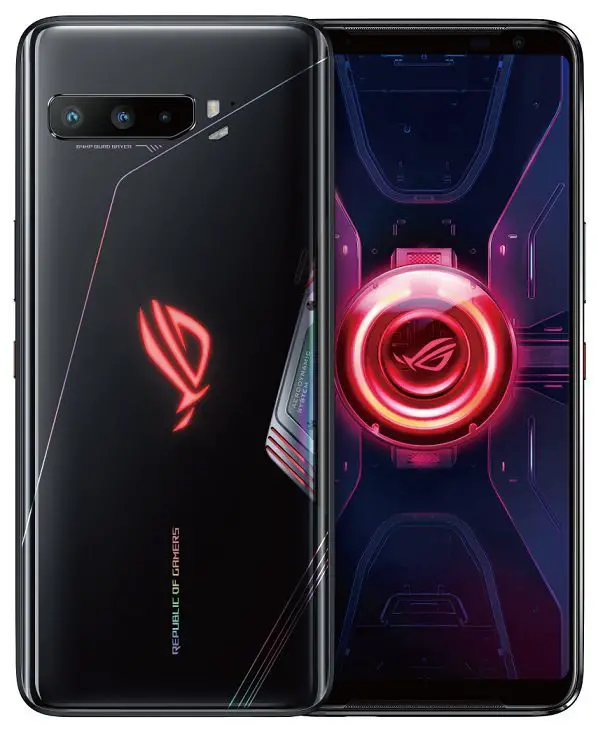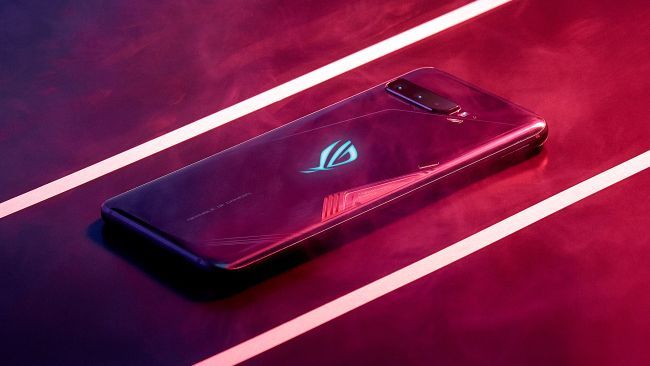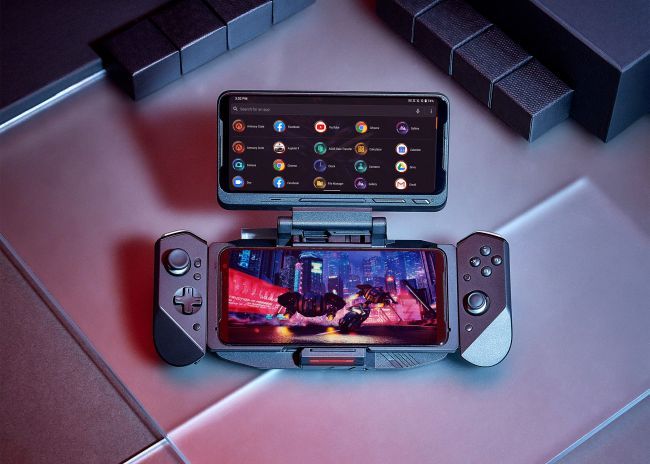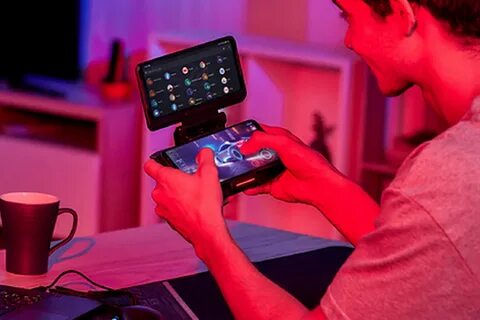In this review, you will read how we witnessed great potential from the new mobile phone from ASUS, the ROG Phone 3 with 16GB RAM.
ASUS ROG Phone 3 review
Every year hundreds of new Android phones are out. Standing out among such a large number of competitors is really complicated, which is why many brands approach very specialized niche markets.
This is the case of Asus, which with its ROG family is clear about what kind of consumers it wants. For those who do not know its ROG family, suffice it to say that it is the acronym for Republic of Gamers, that is, it is its line of devices for gamers.

- How many iPhone components are made by Samsung?
- Full features and specs of the OnePlus Nord smartphone are revealed
- Razer Kishi gamepad for Android smartphones goes on sale
ASUS ROG Phone 3 features
Processor – Qualcomm Snapdragon 865 Plus eight-core
RAM: 16GB LPDRR5
Storage: 512GB UFS 3.1
MicroSD: no
Graphics: Adreno 650
Screen size: 6.6-inches
Resolution: 2340 x 1080 pixels.
AMOLED technology
144 Hz refresh rate
Aspect ratio: 19:9
Rear camera resolution: 64MP main, 13MP wide-angle, 5MP macro.
Others: LED Flash
Front camera resolution: 24MP.
Connectivity: 5G / 4G / LTE, Bluetooth 5.2, WiFi 802.11ax, NFC
Ports: 3.5mm jack (with the fan only), double USB Type-C connector
In-screen fingerprint sensor
Battery: 6,000mAh with 30W fast charge.
Dimensions: 171 x 78 x 9.85mm
Weight: 240g
System: Android 10 with ROG UI
A gaming mobile surprisingly non-flashy
One thing we often take for granted is that gaming-focused devices, so-called gaming gadgets, use exceptionally eye-catching aesthetics and colors. The reason why we think that is quite logical, however, ASUS wanted to maintain a design line in this model that we already saw in the phones from last year.
We are facing a mobile with a very conservative design. At the front we do not have any type of perforation on the screen or notch for the front camera and that is that the upper and lower frames are substantially larger than we are used to. However, this is far from a complaint, since thanks to this we have space to accommodate two large speakers.
What we can criticize is its high weight, 240 grams, still, it’s a price to pay for its huge battery.
This weight, and the dimensions and shapes, are the same as in the ASUS ROG Phone II and it is that the company has wanted to maintain compatibility with accessories.
It is also a different mobile when it comes to seeing the ports and connectors it has. The left part is where the dual SIM slot is placed, although we cannot use an external memory card. On this same side we have a hole covered with a rubber element that stores the connector for some accessories and a USB-C charging port.

At the bottom we have the main charging port. Yes, we have two USB-C ports since it is very common that we want to charge the mobile while playing with it horizontally, and the lower connector would make that task impossible.
On the right side we have the two volume buttons and the power button, plus one of the noise canceling microphones. We also have here two buttons integrated into the metal frame that work like the triggers of a game console .
The frame is also pressure sensitive, as we have seen in some Google Pixel models. If we press quickly or long we can execute two configurable actions, such as opening applications or launching the Google Assistant.
At the top we have another noise canceling microphone. At the back we have the triple camera, the accessory elements to it, with the LED flash and a logo that changes color depending on the configuration we choose.
The construction of this device is very good, with a pleasant grip metal frame and a rear area that traps traces a lot. And it slips, which is why it is not a bad idea to put a cover on it.
In addition, the position of the rear camera, although it is located horizontally, is listed to one side, which means that the mobile does not sit symmetrically on the table or on any surface on which we support it.

In the back area, next to the logo, we have visible a part of the mobile’s ventilation system, which is now six times more voluminous than it was in the previous model.
So, we have a fairly normal gaming mobile in terms of connectors or weight, but with a pleasantly conservative aesthetic that is far from the stridency that we have seen in other competitors. But, above all, it is noticeable that it has been designed to be used very frequently in a horizontal and non-vertical position like most mobiles.
All specs to the top
We always say that the list of specifications of a mobile does not always convey the feeling it gives when using it. And it’s true, it doesn’t always happen. But sometimes yes, and this is one of those occasions.
The ROG 3 is an extremely powerful device. The unit that has been given to us for analysis is the one that has the most memory, with 16GB RAM and no less than 512GB internal memory. The processor is the new Qualcomm Snapdragon 865 Plus, with a maximum clock frequency of 3.1Ghz. Here it is relevant to highlight ASUS’ work to keep thermal throttling under control.
Last year we had a model with 1TB of memory, but this time it is not, because there are no memory at that capacity with UFS 3.1 technology, which is what ASUS wants to use, the fastest.
That model is compatible with Wifi 6E , with Bluetooth 5.2 and with 5G, although only in Sub-6, not in mmWave.

The mobile response is instantaneous when it comes to opening applications, managing multitasking, unlocking and we have had no errors or lags.
One of the most curious functions of this mobile is the frame with pressure sensor that allows you to press the mobile to launch any application, something that we can configure. We have activated the Google Assistant for when we press it briefly and the X Mode, which we will talk about later, with a long squeeze.
The fingerprint sensor is not one of the fastest we’ve tested, but being under the screen is somewhat expected. Despite that, it is functional and we use it regularly since it is also not problematic like some we have seen in other brands.
A great gaming experience
Obviously, its behavior in games is the strongest asset of ASUS ROG Phone 3. We have tried it with a multitude of titles, many more than we usually use every day, to get the most out of it.
The response of the terminal is electric, vibrant, the best we have seen on a device, partly because of the screen, partly because of the power and partly because of the software.
We can control various response parameters of the game, such as latency or refresh rate, in addition to the speed of the processor, in case we are playing at a competitive level.
In addition, the buttons on the right side allow you to create custom configurations, with pulsations, swipes, configuring various reactions depending on where we press… It is something that can be overwhelming but what most gamers will be used to.
We can even configure the turns and movements of the mobile as activations of actions in a game, such as throwing a grenade in an FPS or activating the turbo in a racing game.
A software to match its performance
ASUS ROG Phone 3 has several modifications on Android that improve the gaming experience.
On the one hand we have Mode X, which gives us the option of modifying hardware requirement profiles based on what we need. We will have three levels and the maximum of them can only be enabled if we connect the accessory that includes a mechanical fan.
This fan has a USB-C port to charge the mobile phone, a headphone jack to connect our cable helmets and an element that turns it into a lectern , in case we want to watch a movie or use a wireless remote control. As a nice detail to say that it has a housing to store the rubber piece that usually covers the side connector of the mobile, to prevent us from losing it.
We also have to talk about the Game Genius, a software that runs on top of games and that allows modifying their behavior and mobile behavior in real time. With this we can:
- Activate the haptic buttons on the sides
- Lock screen brightness
- Control the temperature of the mobile
- Record small video clips
- Modify the refresh rate
We can even open applications in floating windows if we want to have a chat or a specific website open while we play.
These are only the main options and it shows that Asus has taken this section of the mobile very seriously.
Sound quality is good, but no headphone jack
The sound of this mobile is one of the best I have been able to enjoy on a mobile device. In addition to having a dual speaker, these are placed at the front making it virtually impossible to accidentally cover them up.
If we put the mobile with the sound activated we can mute each application separately, pressing on the settings that appear when pressing the volume buttons.
The only downside could be seen in the lack of a 3.5mm headphone jack to connect a sound system by cable, although I personally have not missed it. Of course, we can always use the fan that comes in the box that enables this port.

As for the software and algorithms, this time ASUS has chosen the Dirac company since DTS and Dolby have specialized in multimedia consumption and with Dirac it has been possible to improve the sound by focusing these improvements on video games.
This mime in acoustics concludes with the presence of four microphones. The main two are in the lower frame and the upper one. There is another on the right side, next to the d button, for when we use the mobile horizontally. The last one is behind, next to the cameras, and serves to record better sound in videos.
The screen has a high refresh rate
In 2020 it already seems that we are not amazed by any benefit on mobile phones. The 120Hz refresh rates are not yet massive, but they don’t stand out as much as they did earlier in the year. So, companies like Asus have decided to raise the level.
The Asus ROG Phone 3 has a panel with OLED technology and 2340 x 1080p resolution, that is, FHD. But the star figure is its refresh rate, which can reach 144Hz.
In addition, the system allows us to set the refresh rate in automatic mode, so that it only rises when necessary. We were surprised to see that we can not only go from 60 to 144Hz, but we can also choose intermediate steps, with 90 and 120Hz.
Another figure to mention is the 270Hz tactile sampling rate, which makes the mobile respond extremely quickly to our commands. The maximum brightness is 1000 nits and of course it does not need more even to use it in full sunlight.
We have the possibility to calibrate the screen in an advanced way, prevent it from turning off if we are looking at it, change the aesthetics of the shutdown menu, change the font, hide any of the icons in the status bar and even activate the Always- mode. on Panel, which leaves the time on the screen at all times.
There are many options that Asus gives us even though its layer is not one of the ones that most modifies the aesthetics of Android 10. We will talk about it later.
The fingerprint sensor is under it and works well. Even with the screen off, it unlocks acceptably, the scanning area being larger than in many models. The screen is protected by Corning Gorilla Glass 6.
As for the viewing experience, we have no complaints with the panel. Yes, it is true that it is not the highest resolution that we have seen, but the quality is at a great level, and when it comes to watching movies and, above all, playing, we enjoy in the same way that we do with the performance of the terminal .
The Asus ROG 3 camera is better than we expected
When a manufacturer puts all the meat on the grill to offer maximum power, great autonomy and enormous quality on the screen of a mobile phone designed primarily for gaming, there is one aspect that is often neglected: the camera. In fact, in the presentation of this product the photographic section has had a testimonial presence, being generous.
We can say without much fear of being wrong that practically all gaming mobiles have cameras that, at least, can be improved for the price they have. And it is normal, these devices are not designed to be a substitute for a photographic camera, but a machine that sometimes replaces a computer or a console when playing and that, collaterally, have cameras.
And surely that’s why I was so surprised, for good, the photographic system of the ASUS ROG Phone 3.
This device has three cameras on the back, a 64MP main sensor, a 13MPwide angle and a 5MP macro sensor .
The main 64MP sensor is configured to shoot at 16MP by default, improving the detail obtained especially in low light conditions. By day the quality is very good, and the dynamic range and the detail have surprised us especially. There are phones that boast a camera with a lower quality than the ASUS ROG Phone 3 . It has an aperture of f / 1.8 and uses the Sony IMX 686 sensor, the same one that mobiles like the Poco F2 Pro or the Red Magic 5G have.
To put some criticism, sometimes the background of the images seems too little contrasted or with a slightly lower brightness than reality.
The wide-angle 13MP also behaves quite well, although at the edges we notice a loss of detail and a slight deformation, typical of these lenses but that in other models have been solved using software. Of course, the central elements of this type of photography appear in fairly high detail even if they do not reach the level of the main sensor.
At night the quality is also superior to what we thought we were going to have, with a control of the lights that other models already wanted and a night mode that we can activate if we wish.
The last of the sensors is surely the least important, the macro. Despite that, we are surprised to see a 5MP sensor for macro photography when many similarly priced phones opt for one of lower resolution.
The recording of the video is quite well worked, with great stabilization and a dynamic range that, although it is not the best we have seen, seems sufficient. Even video recording by changing lenses goes more unnoticed than most high-end mobiles on the market. However, this does not mean that it is invisible.
At the front we have a single 24MP camera that curiously is capable of doing Pixel Binning and will offer us 6MP images with a fairly acceptable quality.
Daytime selfies offer quite correct detail and acceptable dynamic range for what we expected. It is true that sometimes in high beams the image may burn somewhat, but it has behaved much better than we would have believed. Of course, in the 6MP mode the embellishment by software is excessive. And at night the quality drops quite a bit, and there may be digital noise when increasing an image to 100% of its size, without going any further.
The surprise has come in the video recording, since it has shown us a much better stabilization than that of terminals that boast good cameras . This is something that can be seen even in low light, where the quality falls just as in photography, but the stabilization is still really good.
The huge battery provides 7 hours of screen time
This Asus ROG Phone 3 is a very particular terminal in the battery section. We say this because of the presence of a double USB-C connector. We also have a 30W fast charge, although with the 6,000mAh capacity the time needed to charge it sometimes becomes somewhat long, but it is not excessive either.
We have reached 7 hours of screen with just over 28 hours of total autonomy with automatic screen refresh rate.
We do not have wireless charging for the same reason that we do not have a headphone jack. ASUS wanted to keep the size and dimensions of the previous model but needed more internal space due to new components such as 5G modems.
Still, we can use reverse charging, by cable, with a speed of up to 10W. There are even two customizable charging modes , so we can choose whether or not we want to use the mobile’s fast charge, in case we want to keep it for many years and avoid, as far as possible, battery degradation.
ROG UI provides a similar experience like Google Pixel
Although the Asus interface has themes and we can modify the icons, it is also possible to use the Google aesthetic, both on the desktops and in the settings and icons.
On this very simple layer we have many preferences and improvements, many of them designed for the screen and for the gaming experience. In the performance section we have discussed some. There are others that affect all apps, such as the possibility of hibernating some in the background to save battery power.
The gestures of Android 10, typical of the system, are not maintained by some put by Asus. We can also change parameters such as the power menu, something strange but that we do not dislike.
But not everything is pretty. We see how there are pre-installed applications such as the Facebook one, which we can at least easily delete, but we would like it to be just after turning on the phone for the first time.
One of the few failures that we have seen is that the mobile has a not very secure facial unlocking system since even with a mask on it has been opened. You may simply recognize the eye part, but it doesn’t seem very safe. In fact it unlocks with the whole face covered and only one eye open. Hopefully, this bug may be fixed easily.
Conclusion: ASUS ROG Phone 3
Even though we had a negative bias before we tested, the power and performance is beyond doubt, and the design is pretty cool.
The downsides are the weight, and the lack of a telephoto lens on the back, but considering the photographic behavior, this seems forgivable.
Recommending this mobile to someone who wants an extremely powerful device is very easy. If you are going to play, few options are better than this ASUS ROG Phone 3. The funny thing is that this device is also very easy to recommend to those who are going to play a lot but want a competent terminal in literally all the other sections.





